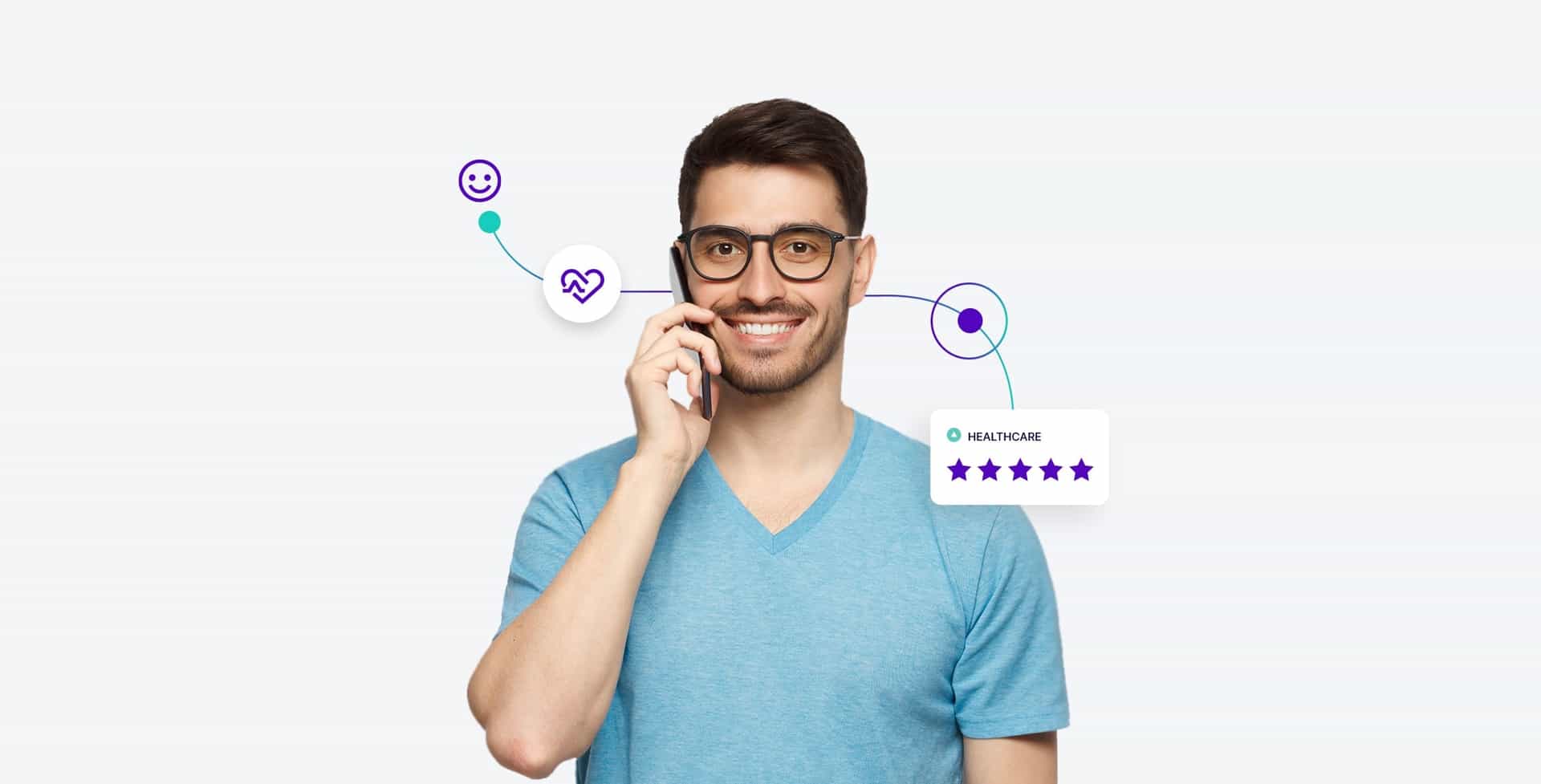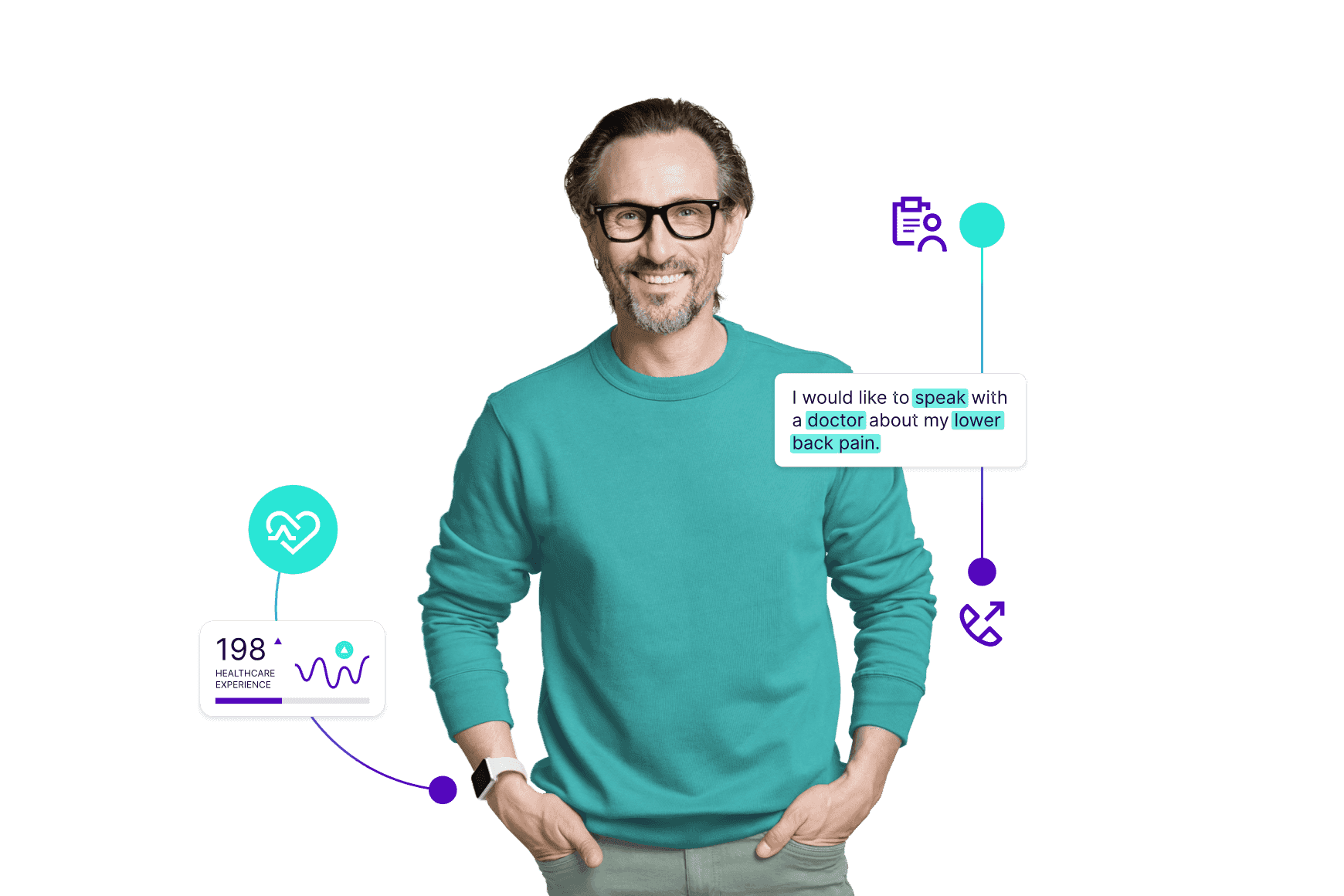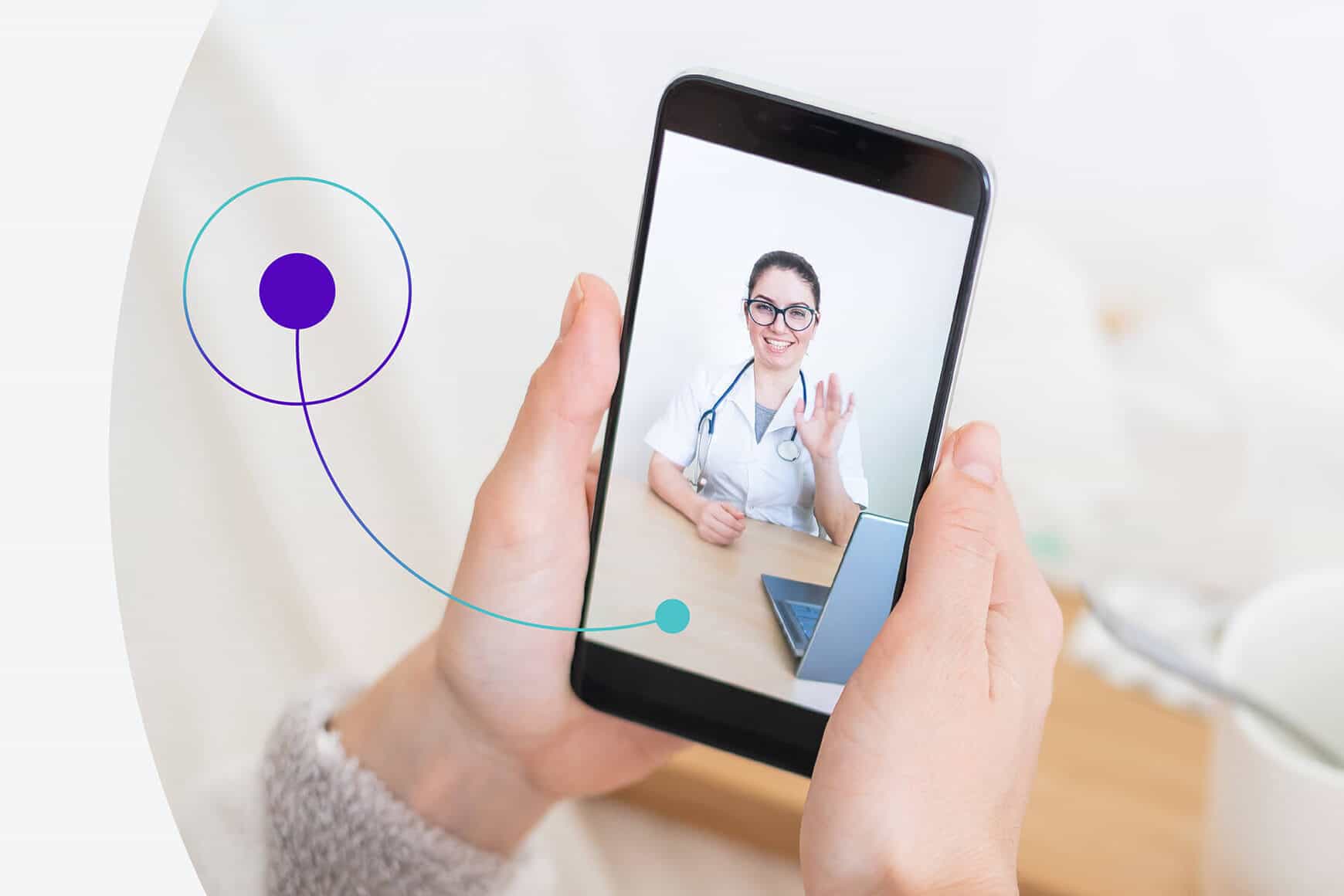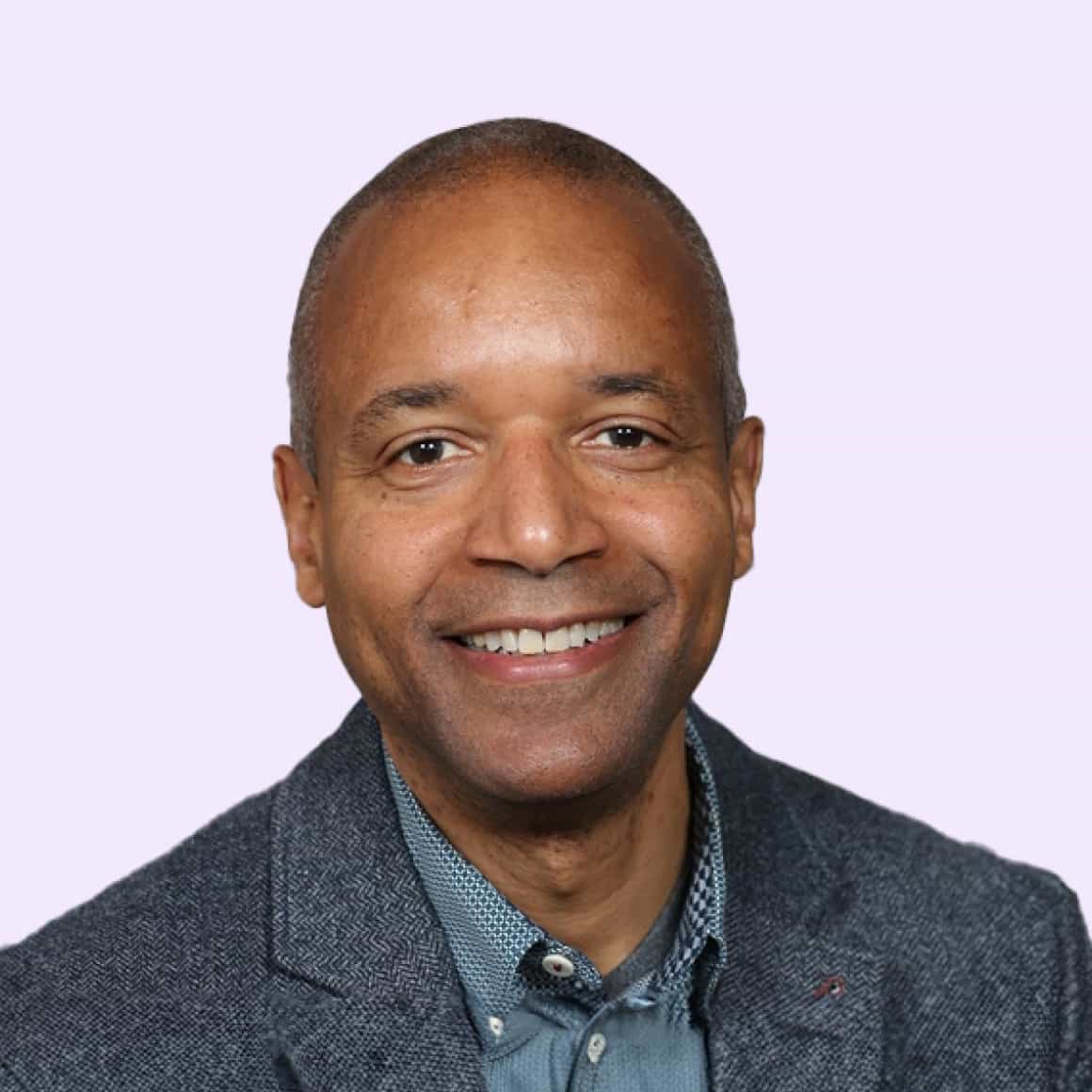HLTH conference 2022 takeaways: How the future of healthcare is taking shape

By Lisa Leung
0 min read

The top five trends we saw at healthcare’s most innovation-focused event.
HLTH conference 2022 in Las Vegas, its fifth annual conference, was one to remember with discussions of critical healthcare issues, breakthrough innovations, and festive entertainment that created a vibrant atmosphere for connections and conversations. The HLTH conference was packed with valuable activities and programs, but here are five trends that stood out:
1. Health equity: Organizations show more accountability to improve diversity, equity, and inclusion among staff and patients served.
The HLTH conference 2022 spotlighted the importance of addressing disparities in access to care. Key themes of having a human-focused approach and using data to serve the right populations echoed across experts and speakers. A great example was Kaiser Permanente highlighting their program on addressing food insecurity for their members. Kaiser bridged data analysis with the human-centered design of their program by analyzing members who were dealing with food insecurity and looking at food in members’ fridges on home visits to gain insights on purchasing habits. They engaged with members through texting, tools on their website, live calls through their call center, and hands-on help through community help workers. Hundreds of thousands of members enrolled in their supplemental food program, resulting in a positive impact through member cost-savings on food expenses and their community wellness.
We saw another great example in a discussion between Centene and Salesforce about using data to create more equitable access to healthcare. Data for personalization and targeting outreach was described as a ‘high tech, low cost’ intervention for complex populations. For patient access, Centene uses data for creating broad and diverse provider networks and care coordination or contact center staff employee base. Championing diversity in its provider networks and employees, Centene aims to provide quality care in rural underserved areas and equip its call center staff with relatability and understanding of its members.
The mission and vision of health equity resonated with us as many Talkdesk healthcare customers serve diverse populations and use our contact center platform to empathetically connect with patients and members. After a lot of emphasis on new channels, it was great to see a focus on thinking about who we build our communications strategy for. Leaders are thinking more about access to the internet, smartphone adoption, primary spoken language, and health tech literacy in designing their engagement approaches.
2. Patient engagement: Solutions are solving more problems for more departments than ever, but many create unintentional communication silos.
Patients are dealing with fragmented consumer journeys in healthcare, as providers adopt point solutions across different departments. Patients have more options for interacting with their health system than ever, but all the different apps used across a given provider’s tech stack are creating disjointed and inconsistent experiences. In the expo hall, there were multiple solutions providers who served the same consumer for different workflows. For a single consumer, one solution provider could accomplish more convenient physician searches and referrals and another different solution provider could be used for clinician communication in the in-patient setting. Disconnects can arise when information from these interaction points is not shared across departments or linked back to a central source of truth, and the patient needs to rehash their story over and over again.
In another session, Intermountain Healthcare shared insights about prioritizing investments in experience as a differentiator to build brand loyalty and market in patients wanting to have care with their organization. Shannon Phillips, President of Intermountain Healthcare, expressed the need for experience to be linked to outcomes—with accountability helping providers to build more cohesive journeys. In a Talkdesk Research™ report, we indicated negative patient outcomes caused by fragmented care such as heightened healthcare expenditures, increased likelihood for departures from clinical best practices, and higher rates of preventable hospitalizations. On the positive side, patients are empowered to proactively manage their own care when they have positive experiences with their health system. They develop positive emotional relationships with their healthcare providers, and are more likely to adhere to their care plans through trust their physicians have built with them.

3. AI & automation: Technical advancement and application to real-world use cases make AI more powerful for decision-making and creating staff bandwidth.
In the past, the adoption curve has been gentle for AI and automation in healthcare. The industry has historically received AI with skepticism. That has started to change, with companies presenting AI technologies ranging from predictive analytics on diseases and conversational bots, to natural language processing software. New market entrants and established vendors iterating with their customers not only understand the technology but also understand the context for using it.
In one discussion at the HLTH conference 2022, Suchi Saria, CEO of Bayesian Health, shared how AI can be applied to streamline workflows for nurses and proactively match patients to the right level of care so that staff bandwidth is not unnecessarily expended. Saria cited a national nursing survey that reported a 27% nursing turnover rate and emphasized the opportunity to develop fine care models where it is focused on giving proactive care.
Beyond the care setting, AI is transforming the healthcare call center. Unfortunately, patients often experience unresolved calls, laborious phone trees and transfer pathways, and long wait times when they call their provider. Among many contact center software platforms presenting capabilities of applying AI technology to automate tasks such as appointment scheduling, refilling a prescription, or providing clinical information at the HLTH conference 2022, Talkdesk stood out. Our contact center platform for healthcare directly integrates with major EHRs such as Epic, Cerner, and Athenahealth through API-based connections without requiring integration partners. Those direct integrations power AI with patient data, allowing virtual agents to access patient information, manage appointments, and help with billing issues for better self-service across voice and digital channels.

4. Staff empowerment & workplace burnout: Good employee experience makes for better healthcare delivery.
The pandemic amplified burnout and induced waves of attrition that amplified the effects of the Great Resignation in healthcare. Everyone’s work and personal lives were impacted by stress and anxiety. Physicians, nurses, and other clinicians and supporting healthcare staff have left traditional care delivery for various reasons. Employers were driven to help employees cope and build resiliency. In another discussion at the HLTH conference 2022, leaders from Disney, Medtronic, VF Corporation, and OC Tanner exchanged ideas for the roadmap on creating sustainable company cultures that support a sense of community and empower employees by helping them manage their emotional well-being. An issue that was highlighted was that employees worry about becoming irrelevant and want to feel appreciated and valued, so they become stressed and burn out because they work so hard to achieve that. Leaders are aiming to create a future where they know how to deliver resources so their employees identify and connect with the greater vision and purpose of their work.
On top of transforming employee culture, employee incentive systems were another area discussed. In Uber Health’s announcement on entering the market for employer groups, Caitlin Donovan shared her story on running a call center in the past. Agents didn’t want to take the time off work to go to a doctor’s appointment they may or may not need because they were rewarded based on attendance and did not have a lot of vacation. Donovan articulated Uber Health’s vision to align employee incentives with taking care of their health, where employees know they only need an hour instead of an entire day to get their healthcare, and employers get more working time from their employees.
In the healthcare contact center, reimagining culture and employee incentives must go along with having the right technology to empower staff. Talkdesk offers contact center technology that automates workflows to reduce costs and enable frictionless communications, driving patient and employee satisfaction as staff can focus on the most impactful conversations. There are also workforce management applications that help optimize staff schedules and manage performance through coaching and reinforcement. Staff are empowered as they gain more flexibility with their schedules and mastery with matching the right skill set with the right interactions. An empowered staff is willing to go the extra mile to provide great patient experiences.

5. Consumerism: The healthcare ecosystem needs to think differently about their patient and member experiences to meet consumers’ expectations.
Consumers’ journeys with their providers and payers are changing. Consumers are interacting with their health systems digitally and shopping for their healthcare like they shop across their favorite brands in other industries with more direct-to-consumer companies. Patients have more choices and have become more selective of quality healthcare that will reduce their out-of-pocket costs amidst inflation and the current economic climate. That’s why it’s important for providers and payers to differentiate the experience patients and members have with them. The one-size fits all approach fails because healthcare is extremely personal to each individual.
Providers can differentiate themselves by making the healthcare system easier to navigate for the patient. Payers can differentiate themselves by customizing benefits. One example presented was Zebra’s technology to digitize the patient experience through patient identification, clinical mobility, and real-time tracking and optimization of vaccine shipments. The technology creates a digital diary of on-demand healthcare through a digitized workflow connected to the EHR system and reduces friction in how healthcare gets done. For payers, another speaker suggested the health plan of the future can be like a financial plan. Similar to a portfolio of products of stocks, bonds, and others, the health plan could be a portfolio of products like health insurance, digital health, line of credit that helps pay for out-of-pocket expenses, and care navigation. There is a disaggregation on the supply side that needs to be re-aggregated for the consumer in a way that is customized and relevant for each person.
Talkdesk makes the healthcare journey patient-centered through a communication platform that is deeply integrated with the EHR and eliminates silos within a healthcare system by connecting the patient’s experience between multiple facilities and care teams. That way, the patient feels known and cared for at each step or touchpoint through their entire healthcare journey. Let us show you how.








